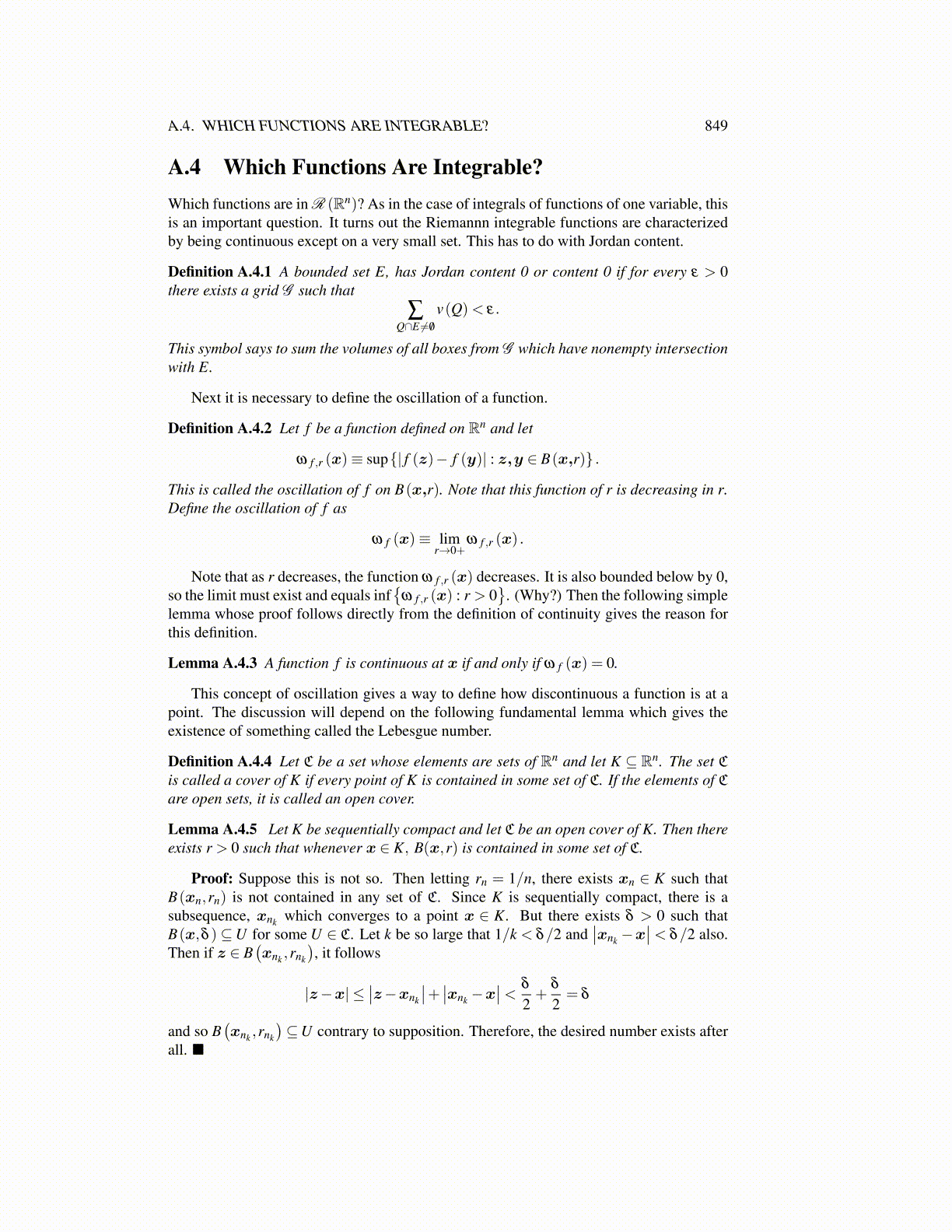
A.4. WHICH FUNCTIONS ARE INTEGRABLE? 849
A.4 Which Functions Are Integrable?Which functions are in R (Rn)? As in the case of integrals of functions of one variable, thisis an important question. It turns out the Riemannn integrable functions are characterizedby being continuous except on a very small set. This has to do with Jordan content.
Definition A.4.1 A bounded set E, has Jordan content 0 or content 0 if for every ε > 0there exists a grid G such that
∑Q∩E ̸= /0
v(Q)< ε.
This symbol says to sum the volumes of all boxes from G which have nonempty intersectionwith E.
Next it is necessary to define the oscillation of a function.
Definition A.4.2 Let f be a function defined on Rn and let
ω f ,r (x)≡ sup{| f (z)− f (y)| : z,y ∈ B(x,r)} .
This is called the oscillation of f on B(x,r). Note that this function of r is decreasing in r.Define the oscillation of f as
ω f (x)≡ limr→0+
ω f ,r (x) .
Note that as r decreases, the function ω f ,r (x) decreases. It is also bounded below by 0,so the limit must exist and equals inf
{ω f ,r (x) : r > 0
}. (Why?) Then the following simple
lemma whose proof follows directly from the definition of continuity gives the reason forthis definition.
Lemma A.4.3 A function f is continuous at x if and only if ω f (x) = 0.
This concept of oscillation gives a way to define how discontinuous a function is at apoint. The discussion will depend on the following fundamental lemma which gives theexistence of something called the Lebesgue number.
Definition A.4.4 Let C be a set whose elements are sets of Rn and let K ⊆ Rn. The set Cis called a cover of K if every point of K is contained in some set of C. If the elements of Care open sets, it is called an open cover.
Lemma A.4.5 Let K be sequentially compact and let C be an open cover of K. Then thereexists r > 0 such that whenever x ∈ K, B(x,r) is contained in some set of C.
Proof: Suppose this is not so. Then letting rn = 1/n, there exists xn ∈ K such thatB(xn,rn) is not contained in any set of C. Since K is sequentially compact, there is asubsequence, xnk which converges to a point x ∈ K. But there exists δ > 0 such thatB(x,δ )⊆U for some U ∈ C. Let k be so large that 1/k < δ/2 and
∣∣xnk −x∣∣< δ/2 also.
Then if z ∈ B(xnk ,rnk
), it follows
|z−x| ≤∣∣z−xnk
∣∣+ ∣∣xnk −x∣∣< δ
2+
δ
2= δ
and so B(xnk ,rnk
)⊆U contrary to supposition. Therefore, the desired number exists after
all. ■